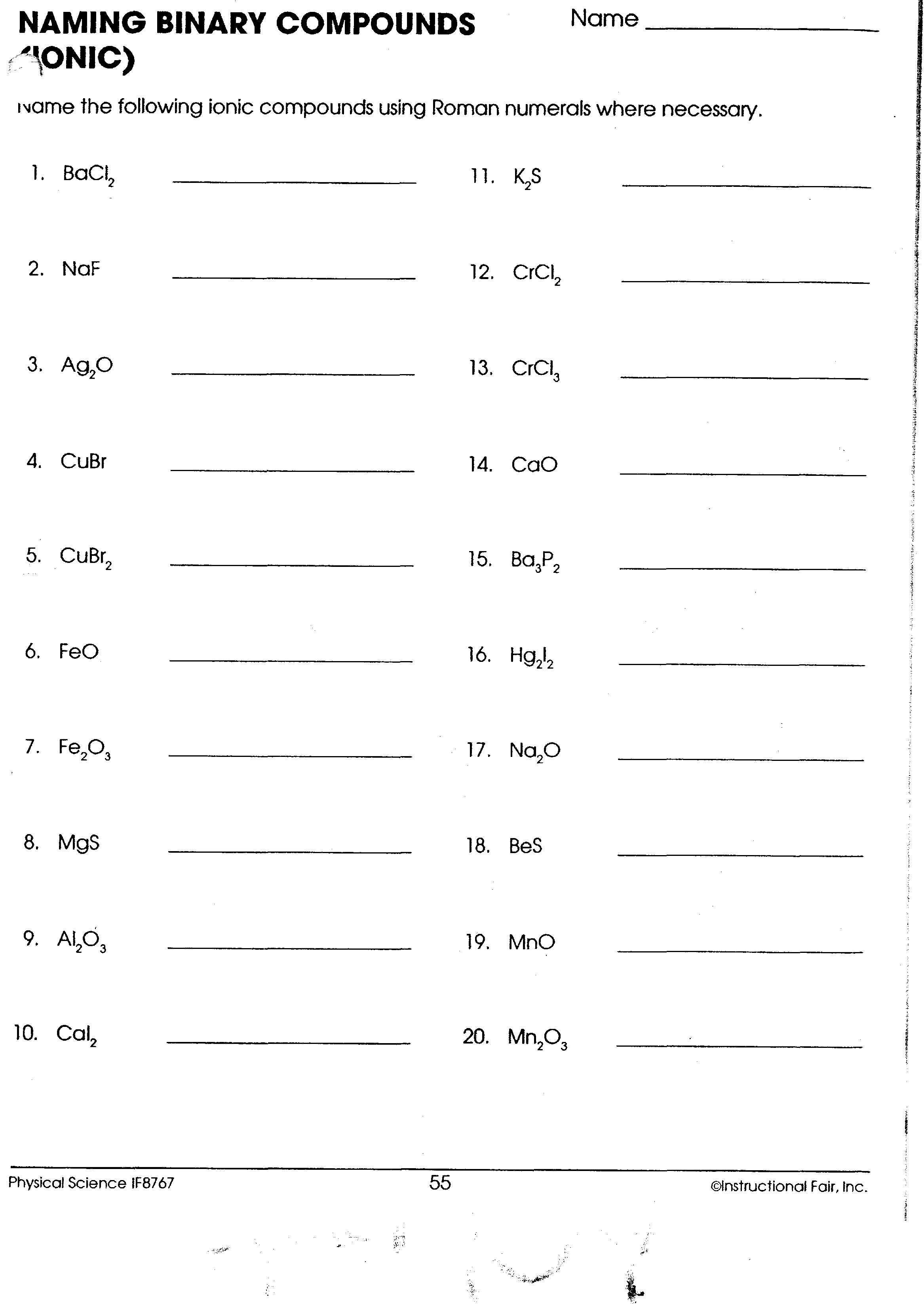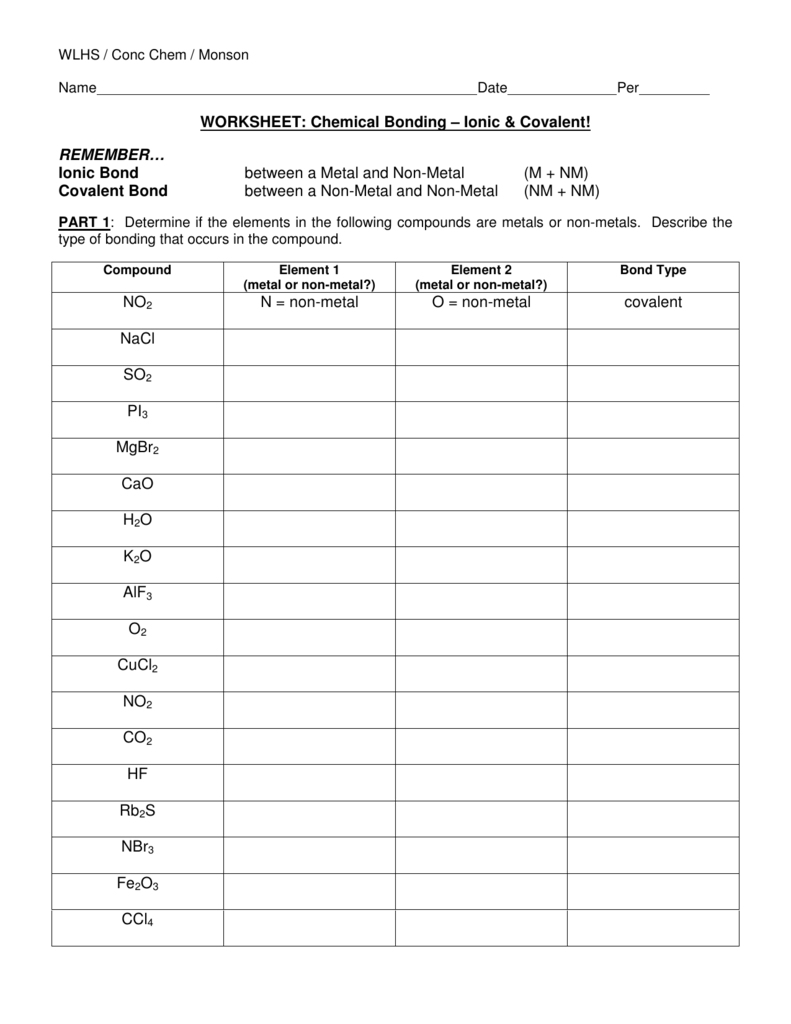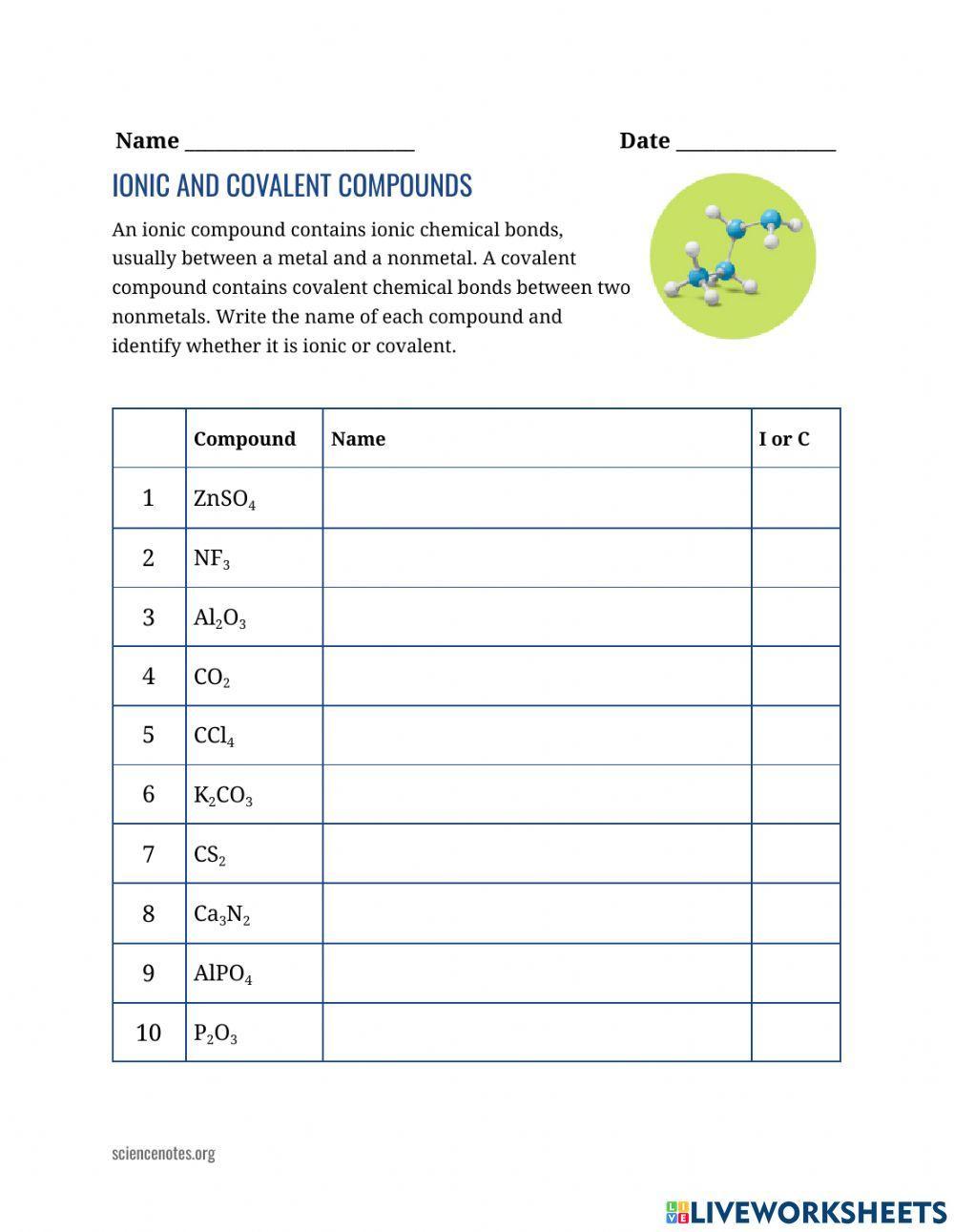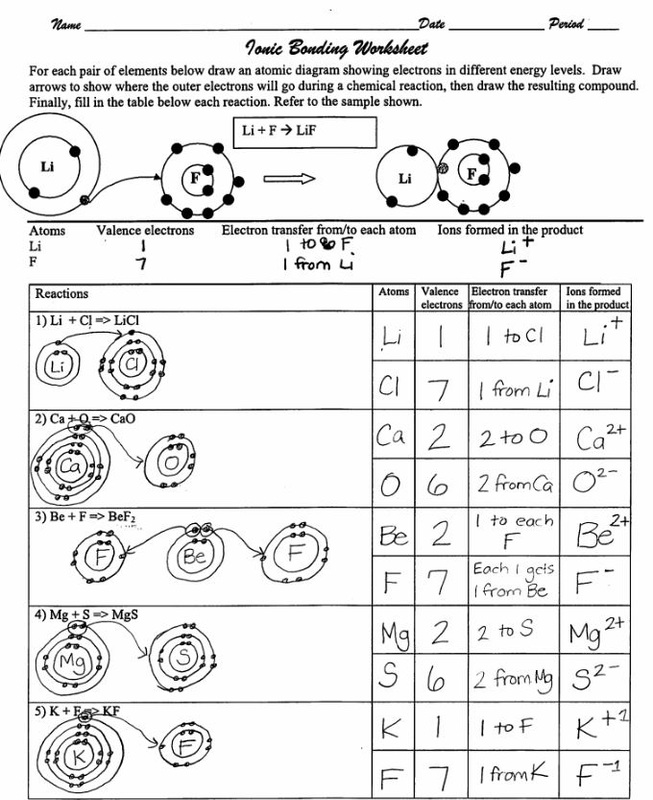Ionic Bonding Worksheet Pdf Answers - Name the following covalent compounds:! Ionic bonds • ionic bonds form between _____ and _____. Model 1 substances are called ionic compounds and model 2 substances are called covalent molecules. • in naming simple ionic compounds, the _____ is always first, the _____ second (e.g., sodium. Read each question or statement and respond in your notebook. An electron (or some electrons) are transferred from a metal atom to a nonmetal. Describe the four steps involved in ionic bond formation. Write a simple rule that will allow you. For each element below, state (i) the number of valence electrons in the atom, (ii).
Write a simple rule that will allow you. Describe the four steps involved in ionic bond formation. Name the following covalent compounds:! Ionic bonds • ionic bonds form between _____ and _____. Model 1 substances are called ionic compounds and model 2 substances are called covalent molecules. Read each question or statement and respond in your notebook. • in naming simple ionic compounds, the _____ is always first, the _____ second (e.g., sodium. For each element below, state (i) the number of valence electrons in the atom, (ii). An electron (or some electrons) are transferred from a metal atom to a nonmetal.
Name the following covalent compounds:! Ionic bonds • ionic bonds form between _____ and _____. Write a simple rule that will allow you. Read each question or statement and respond in your notebook. • in naming simple ionic compounds, the _____ is always first, the _____ second (e.g., sodium. An electron (or some electrons) are transferred from a metal atom to a nonmetal. For each element below, state (i) the number of valence electrons in the atom, (ii). Describe the four steps involved in ionic bond formation. Model 1 substances are called ionic compounds and model 2 substances are called covalent molecules.
Ionic Compounds Practice 1 Worksheet
• in naming simple ionic compounds, the _____ is always first, the _____ second (e.g., sodium. Ionic bonds • ionic bonds form between _____ and _____. For each element below, state (i) the number of valence electrons in the atom, (ii). Describe the four steps involved in ionic bond formation. An electron (or some electrons) are transferred from a metal.
Unit 6 Worksheet 3 Ionic Compounds Unit 6 Worksheet 3 Ionic
An electron (or some electrons) are transferred from a metal atom to a nonmetal. Name the following covalent compounds:! • in naming simple ionic compounds, the _____ is always first, the _____ second (e.g., sodium. Ionic bonds • ionic bonds form between _____ and _____. Write a simple rule that will allow you.
Ionic And Covalent Bonding Worksheets With Answers
Read each question or statement and respond in your notebook. An electron (or some electrons) are transferred from a metal atom to a nonmetal. Write a simple rule that will allow you. Ionic bonds • ionic bonds form between _____ and _____. For each element below, state (i) the number of valence electrons in the atom, (ii).
Free Printable Ionic Bonding Worksheets Worksheets Library
Name the following covalent compounds:! Describe the four steps involved in ionic bond formation. • in naming simple ionic compounds, the _____ is always first, the _____ second (e.g., sodium. Read each question or statement and respond in your notebook. Model 1 substances are called ionic compounds and model 2 substances are called covalent molecules.
Ionicbondingworksheetanswersofionicbondsworksheet Worksheets
An electron (or some electrons) are transferred from a metal atom to a nonmetal. Model 1 substances are called ionic compounds and model 2 substances are called covalent molecules. Write a simple rule that will allow you. Describe the four steps involved in ionic bond formation. For each element below, state (i) the number of valence electrons in the atom,.
Gcse Chemistry Ionic Bonding Worksheet
Ionic bonds • ionic bonds form between _____ and _____. For each element below, state (i) the number of valence electrons in the atom, (ii). Describe the four steps involved in ionic bond formation. An electron (or some electrons) are transferred from a metal atom to a nonmetal. • in naming simple ionic compounds, the _____ is always first, the.
Ionic Bonding Worksheet With Answers Pdf
Name the following covalent compounds:! Read each question or statement and respond in your notebook. • in naming simple ionic compounds, the _____ is always first, the _____ second (e.g., sodium. An electron (or some electrons) are transferred from a metal atom to a nonmetal. Ionic bonds • ionic bonds form between _____ and _____.
Ionic Bonding Worksheets
• in naming simple ionic compounds, the _____ is always first, the _____ second (e.g., sodium. Write a simple rule that will allow you. Ionic bonds • ionic bonds form between _____ and _____. Name the following covalent compounds:! For each element below, state (i) the number of valence electrons in the atom, (ii).
Ionic bonding worksheet with answers Studocu
An electron (or some electrons) are transferred from a metal atom to a nonmetal. Read each question or statement and respond in your notebook. Describe the four steps involved in ionic bond formation. For each element below, state (i) the number of valence electrons in the atom, (ii). Write a simple rule that will allow you.
Ionic Bonding Worksheets
Read each question or statement and respond in your notebook. Name the following covalent compounds:! Describe the four steps involved in ionic bond formation. An electron (or some electrons) are transferred from a metal atom to a nonmetal. Write a simple rule that will allow you.
Describe The Four Steps Involved In Ionic Bond Formation.
Ionic bonds • ionic bonds form between _____ and _____. Name the following covalent compounds:! • in naming simple ionic compounds, the _____ is always first, the _____ second (e.g., sodium. An electron (or some electrons) are transferred from a metal atom to a nonmetal.
For Each Element Below, State (I) The Number Of Valence Electrons In The Atom, (Ii).
Model 1 substances are called ionic compounds and model 2 substances are called covalent molecules. Write a simple rule that will allow you. Read each question or statement and respond in your notebook.









